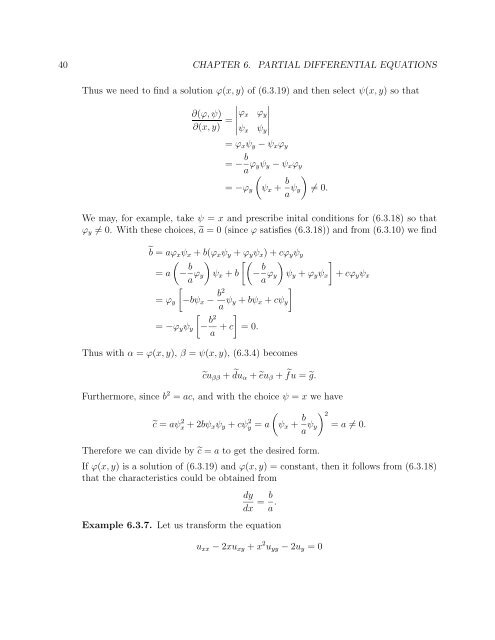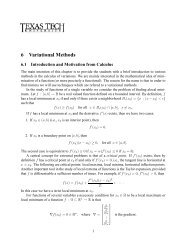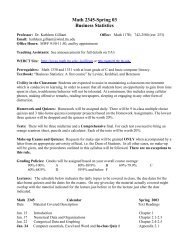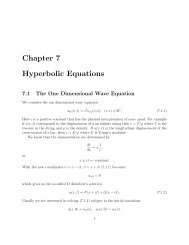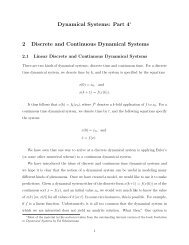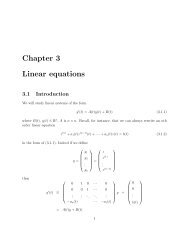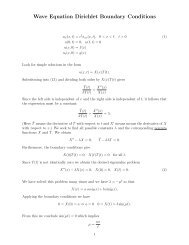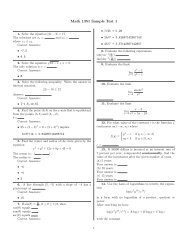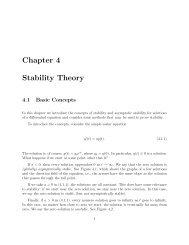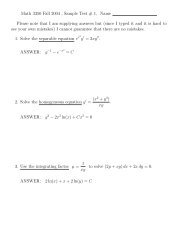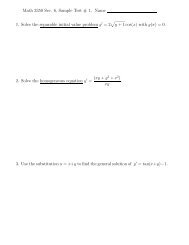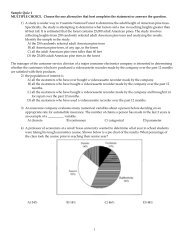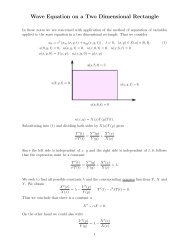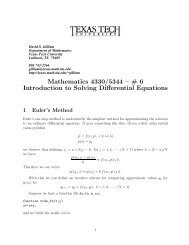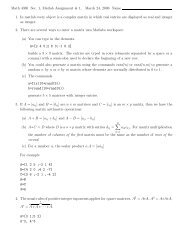Chapter 6 Partial Differential Equations
Chapter 6 Partial Differential Equations
Chapter 6 Partial Differential Equations
Create successful ePaper yourself
Turn your PDF publications into a flip-book with our unique Google optimized e-Paper software.
40 CHAPTER 6. PARTIAL DIFFERENTIAL EQUATIONS<br />
Thus we need to find a solution ϕ(x, y) of (6.3.19) and then select ψ(x, y) so that<br />
∣<br />
∂(ϕ, ψ) ∣∣∣∣<br />
∂(x, y) = ϕ x<br />
ψ x<br />
ϕ y<br />
ψ y<br />
∣ ∣∣∣∣<br />
= ϕ x ψ y − ψ x ϕ y<br />
= − b a ϕ yψ y − ψ x ϕ y<br />
= −ϕ y<br />
(ψ x + b )<br />
a ψ y ≠0.<br />
We may, for example, take ψ = x and prescribe inital conditions for (6.3.18) so that<br />
ϕ y ≠ 0. With these choices, ã = 0 (since ϕ satisfies (6.3.18)) and from (6.3.10) we find<br />
˜b = aϕx ψ x + b(ϕ x ψ y + ϕ y ψ x )+cϕ y ψ y<br />
(<br />
= a − b ) [(<br />
a ϕ y ψ x + b − b ) ]<br />
a ϕ y ψ y + ϕ y ψ x + cϕ y ψ x<br />
[<br />
]<br />
= ϕ y −bψ x − b2<br />
a ψ y + bψ x + cψ y<br />
[ ]<br />
= −ϕ y ψ y − b2<br />
a + c =0.<br />
Thus with α = ϕ(x, y), β = ψ(x, y), (6.3.4) becomes<br />
˜cu ββ + ˜du α + ẽu β + ˜fu = ˜g.<br />
Furthermore, since b 2 = ac, and with the choice ψ = x we have<br />
(<br />
˜c = aψx 2 +2bψ x ψ y + cψy 2 = a ψ x + b 2<br />
y)<br />
a ψ = a ≠0.<br />
Therefore we can divide by ˜c = a to get the desired form.<br />
If ϕ(x, y) is a solution of (6.3.19) and ϕ(x, y) = constant, then it follows from (6.3.18)<br />
that the characteristics could be obtained from<br />
dy<br />
dx = b a .<br />
Example 6.3.7. Let us transform the equation<br />
u xx − 2xu xy + x 2 u yy − 2u y =0


